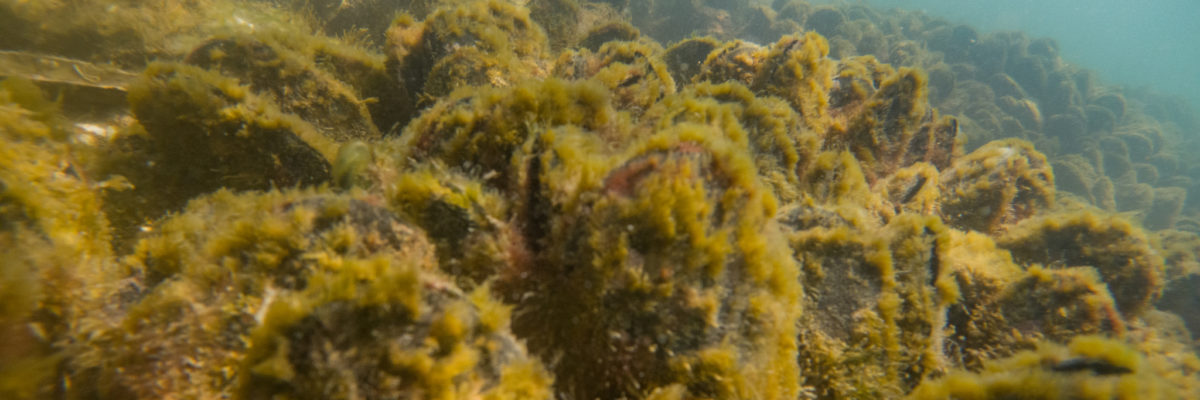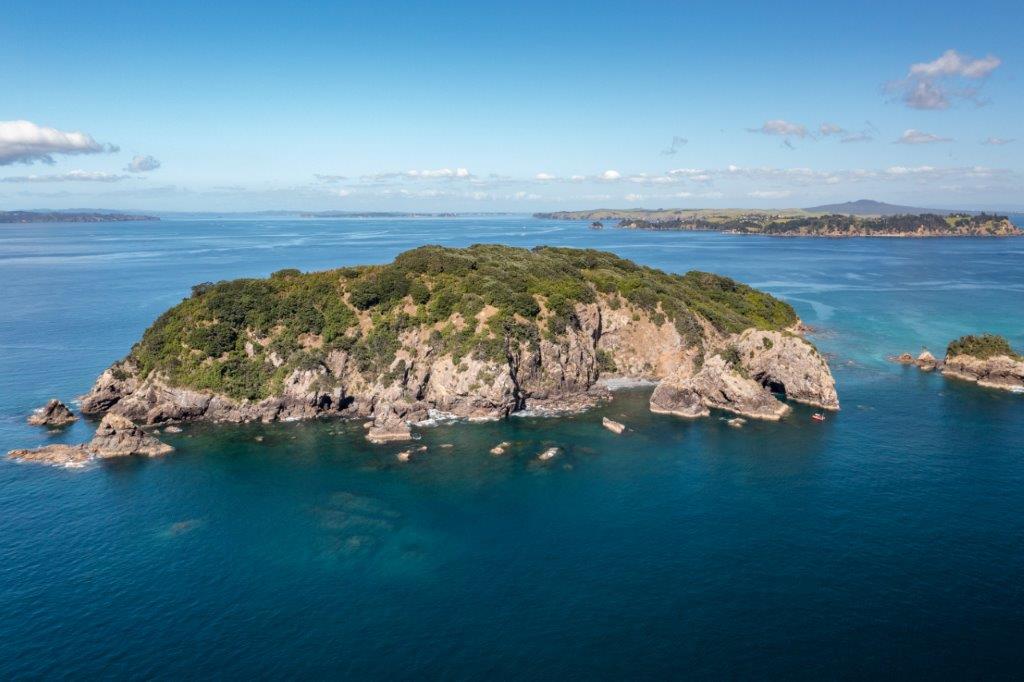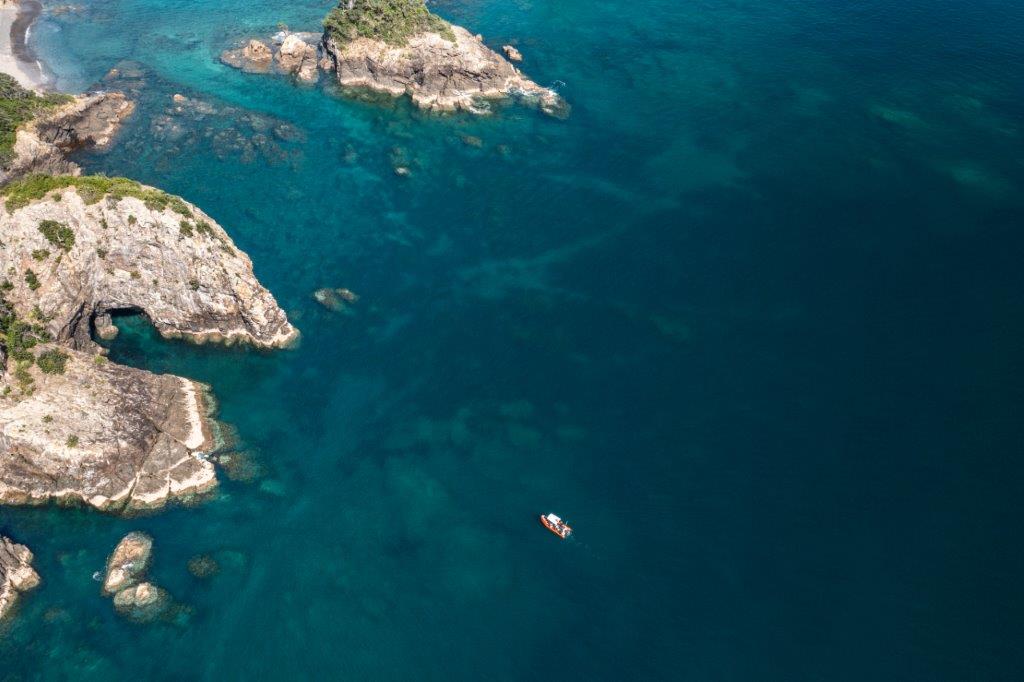The Noises hold a very special interest for seabird lovers. Being home to at least…

Show us your mussels
We’ve been watching the mussel/kūtai beds around The Noises for as long as we can remember. For so many years they have been a reliable source of food for our family, countless visitors to the islands and the many generations before us. The mussels have also been busy doing the work that molluscs are known for, filtering impurities out of the water column, providing shelter and habitat for a diverse range of marine species and serving as a barometer for the health of the moana.
Which is why I want to share some recent observations of those kūtai beds.
I attended a Revive Our Gulf hui at the end of March, and we discussed the potential for using wild mussel beds to enhance restoration. That might be as simple as protecting the beds we still have, to ensure they remain and can function as they should. We could use them to learn more about the life cycle of wild mussels, and we may be able to use existing beds as guides to determine appropriate sites for restoration work.
Wild kūtai beds may also present potential for spat collection because wild mussels don’t tend to have the same physical characteristics as farmed ones. This is understandable, given they started their life in the Hauraki Gulf, at the mercy of the elements, as opposed to being collected as spat and grown in sheltered conditions on ropes.
Following the Revive Our Gulf hui, later in April, Shaun Lee and I spent a day out diving on four different sites around The Noises, and we checked on reefs we hadn’t been able to access by small boat since January because of unfavourable weather conditions. We had recently seen good recruitment at all the sites we dived, but on that day in April, as far as we could see in the poor visibility, the new kūtai were all gone.
One of the impacts is undoubtedly unrestrained harvest and those new kūtai recruits were about the size of supermarket mussels, so they probably looked appealing to some harvesters. Because collecting kūtai has gone on for so long and more recently the impact on the beds has increased as the corresponding decrease in tipa (scallops), and kōura (crayfish), this has also put more pressure on them. Now, for the first time in 45 years, the reef off the main beach is bare, and that’s devastating and not just the disappearance of the mussels, but all the life associated with them that has gone as well.
There have been two major storm events since January, and I finally managed to snorkel around Ōtata recently in reasonably good visibility, and I saw the storm impacts up close. Kelp and sponge beds had been ripped to shreds, and the remaining kūtai torn off. Harvesting tends to leave holes in the beds which leave the kūtai more exposed to wave and swell impact. This in turn makes them more vulnerable to storms, not to mention easier harvesting which creates a vicious cycle.
Yet another worrying factor to be added into the mix, is the return of Ostreopsis dinoflagellate, a destructive plankton. We’ve seen it before and it varies in its severity, having arrived in similar conditions in the summer of 2018. It seems to appear during long summers of constant northerly conditions which lead to the suspension of sediment and prolonged, elevated water temperatures. It looks like brown snot, sediment sticks to it and it smothers the seafloor and all the life around it. It disappears of its own accord, once the temperatures drop, but while it is present, it will coat filter feeders like bivalves and sponges.
To be fair, there are still some large remnant kūtai left across various sites, but they’re found in vastly reduced numbers and locations as compared to even four years ago.
Recently, Rod, Zoe and I had time to check the other sites where there had been strong new mussel growth and it was the same sorry story – they seem mostly to be gone. For any that are left, at this time of the year there is yet another algae present, a brown filamentous fuzz blanketing large areas. Although this algae is known to be seasonal, it seems to favour similar conditions to the Ostreopsis. This year it’s particularly dense, with big areas blanketed in a hairy, brown, smothering carpet, and if there are new mussel recruits, they’re covered and don’t stand out. Or stand a chance. And any we have found are in very poor condition.
It was a relief to find some very small recruits nestled into coralline turf in an area adjacent to Ōtata where the kelp is intact, as it contains very low kina numbers and the kina haven’t eaten all the seaweeds. In that same beautiful healthy area that was thankfully free of the snot and fuzz, I also saw my first ever weedfish – which left me feeling excited and gave me cause for hope! In fact that whole healthy patch, in spite of its diminutive size, gave me a renewed sense of positivity that it’s not too late for recovery and regeneration – if we act now and pull the lever of protection.
But all of this does make me question, where are the tipping points? Are we too late to save some species? What role is climate change playing in all of this? Can scallops return now they are protected and will they still have the conditions they require to thrive as they once did?
For the time-being, all we can do is wait and watch and work, as determinedly as ever, towards full protection right around The Noises. Because protection would allow us to pinpoint the real triggers of change. If we could eliminate harvest impacts, it would allow us to understand to what extent extraction is responsible for the changes we’re seeing and lead to a brighter future for the Tīkapa Moana/Te Moananui-ā-Toi/the Hauraki Gulf – something we will all benefit from.
Mauriora.



